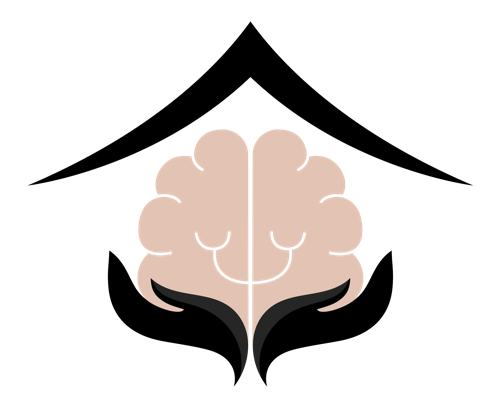The field of mental health has changed dramatically in the last few years, especially with regard to Ketamine Treatment for Depression, where ketamine has become a ground-breaking therapeutic option for individuals suffering from treatment-resistant forms of the disease. This change raises a crucial query: what distinguishes ketamine from conventional antidepressants such as SSRIs and SNRIs? Our thorough investigation seeks to solve the enigmas surrounding ketamine by contrasting its advantages and possible disadvantages with those of traditional therapies. Ketamine’s potential as a revolutionary treatment for depression has sparked discussions about its viability and whether it’s a passing fad or a real medical breakthrough. This comprehensive assessment aims to provide you with the knowledge you need to have educated conversations with healthcare professionals, which will ultimately help you make well-informed decisions about the mental health treatments you can receive.
Understanding Ketamine
Ketamine was first synthesized in 1962 but gained widespread recognition as a powerful anesthetic during the Vietnam War. In recent decades, it has emerged as a promising treatment for severe depression. However, when we speak about ketamine as an antidepressant, we’re referring to a reformulation of this drug—administered in a medical setting at much lower doses than those typically used for anesthesia.
Ketamine’s antidepressant properties are rooted in its unique mechanism of action, which diverges significantly from that of traditional antidepressants. This dissociative drug acts on the glutamatergic system, influencing the brain’s neuroplasticity, facilitating the formation of new connections and pathways. Unlike SSRIs, which primarily influence serotonin levels, ketamine takes the road less traveled, with potentially faster, though shorter-lived, effects.
Traditional Antidepressants
Before we can fully grasp Ketamine Treatment for Depression distinctiveness, we must first understand the traditional antidepressants that have long been the frontline treatment for depression. Selective serotonin reuptake inhibitors (SSRIs) and serotonin-norepinephrine reuptake inhibitors (SNRIs) are among these medications that so many are familiar with. They primarily work by modulating the levels of neurotransmitters in the brain, aiming to improve mood over time.
The full effects of traditional antidepressants usually take weeks to manifest, and the precise mechanism of action is still unclear. However, the influence they exert on serotonin and norepinephrine is thought to play a central role. The widespread use of these drugs speaks to their general safety profile, specifically in comparison to older generations of antidepressants.
Ketamine’s Unique Mechanism of Action
- Quick Onset of Action:
- Ketamine Treatment for Depression demonstrates a remarkably fast onset of action in treatment, with improvements often noticeable within hours.
- This rapid response contrasts significantly with the weeks or even months it can take for traditional antidepressants to show effects.
- Temporary Effects:
- Despite its quick onset, the therapeutic effects of Ketamine Treatment for Depression tend to be short-lived, usually dissipating within days.
- This necessitates repeated administrations to maintain its antidepressant effects, raising questions about the drug’s long-term safety and potential for dependency.
- Repetitive Administration Concerns:
- The need for frequent dosing to sustain ketamine’s benefits has sparked discussions regarding its safety over extended periods.
- Concerns center around the implications of long-term use, including possible side effects and the risk of developing a tolerance or dependence on the medication.
- Mechanism of Action:
- Ketamine’s ability to rapidly alleviate symptoms of treatment-resistant depression suggests a unique mechanism of action, differing fundamentally from that of traditional antidepressants.
- It operates by affecting glutamate release, triggering a series of biological processes that culminate in increased production of brain-derived neurotrophic factor (BDNF).
- Influence on BDNF Production:
- By promoting the release of BDNF, a protein vital for the growth and maintenance of healthy brain cells, ketamine contributes to neural health and resilience.
- This effect on BDNF production is considered a key factor in ketamine’s effectiveness, offering insights into new pathways for treating depression.
- Potential for Advancing Depression Treatment:
- Ketamine Treatment for Depression success in cases where other treatments have failed positions it as a significant advancement in the fight against depression.
- Ketamine’s unique action provides immediate relief and enhances understanding of depression, inspiring innovative treatment approaches.
Research and Clinical Data
Research backing ketamine for depression is growing but doesn’t match traditional antidepressants’ extensive data yet. Recent studies have shown promising results, with many patients reporting reduced symptoms, even those with severe and treatment-resistant depression. While traditional antidepressants remain the gold standard for many types of depression, Ketamine Treatment for Depression is offering new hope for those who have not found relief elsewhere.
However, with the emergence of a new treatment comes investigative caution. Ongoing research aims to better understand the risks, as well as the benefits, of Ketamine Treatment for Depression. The potential for abuse and the long-term neurological effects of regular ketamine use are subjects of active study.
Navigating Treatment Options
The decision to explore Ketamine Treatment for Depression requires thoughtful consideration. Understanding how it diverges from traditional antidepressants can empower individuals in their treatment journeys. The severity of depression, treatment responses, and medical history are key factors in determining the most suitable treatment approach.
When it comes to mental health, one size does not fit all. Ketamine offers new possibilities, but traditional antidepressants remain valuable tools in depression treatment. Tailoring the approach to the individual’s unique circumstances and medical condition is often the best approach.
Conclusion
To summarize, Ketamine Treatment for Depression represents a watershed moment in the treatment, distinguishing itself from traditional treatments due to its rapid efficacy and ability to treat treatment-resistant depression. Its introduction into the medical discourse emphasizes its potential significance, though research into its long-term efficacy and effects is ongoing. For those dealing with depression, the introduction of Ketamine Treatment for Depression as a therapeutic option opens up new possibilities, broadening the range of treatment options available in the field of mental health. Ketamine, rather than competing with existing antidepressants, improves the treatment landscape as a complementary and alternative medicine (CAM), providing a more diverse and personalized approach to mental health management. This shift towards incorporating ketamine signifies a move towards a more holistic and inclusive strategy in addressing mental health needs, providing renewed hope and expanded options for individuals seeking relief from depression.



